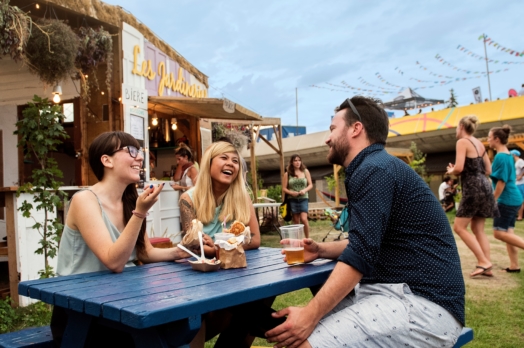A metropolis with about 4,3 million people, located in the largest province of Canada, Québec. Strategically located on the fleuve St-Laurent, it’s a 90-minute flight from Toronto and New York and less than an hour’s drive from the U.S. border. It gives direct access to nearly 500 million consumers through the The Canada-United States-Mexico Agreement (CUSMA).
So there you have it, Greater Montréal at a glance: a metropolis that has the power to propel you forward for your studies and after graduation.



A Well-Located Metropolis
A veritable conduit between Europe and North America, Greater Montréal provides fast access to several major American and Canadian metropolitan areas such as:
To the South:
- Boston, university city
- New York, world financial centre
- Washington, capital of the United States
To the West:
- Toronto, economic metropolis of Canada
- Ottawa, Canada’s capital
A Rich Territory
Choosing Greater Montréal as a place of studies or residence means taking advantage of a metropolitan region that is driven by economic vitality and cultural diversity that go well beyond the limits of the Island of Montreal.
The Communauté métropolitaine de Montréal (CMM), commonly known as “Greater Montréal”, covers over 4 000 km2 and includes 82 local municipalities, including the cities of Laval and Longueuil, as well as the entire network of cities on the South Shore and on the North Shore of Montréal.



A Slice of Neighbourhood Life
Greater Montréal is one of North America’s most important urban centres . Peaceful and safe, Québec’s metropolis owes its vitality to a lively and vibrant neighbourhood life, where everyone feels they have their place: creative people, students, professionals and, of course, families.



The Multicultural Heart of Québec
Greater Montréal is made up of almost 4,3 million people, that’s almost half of Quebec’s total population of just over 8,5 million people.
Although a majority of residents have English or French as their mother tongue, the linguistic and cultural portrait of Montréal remains purposefully cosmopolitan: 110 native languages are spoken at home, the most common languages being Arabic, Spanish, Italian, Chinese and Creole.
Worldwide recognition
Greater Montréal is a metropolis recognized worldwide.
- 2nd best city in the world for remote workers (Workmotion, 2021)
- Best city in Canada and 9th in the world (TimeOut, 2022)
- Lowest crime index among the 20 largest cities in Canada and the U.S. (Numbeo, 2022)
- Best city in the Americas for its quality of life (Knight Frank, City Wellbeing Index, 2020)
- The most bilingual and trilingual population in Canada (Statistics Canada, 2016)
- Happiest city in the Americas and second in the world (Lonely Planet, 2018)
- Most reputable city in the Americas (Reputation Institute, 2018)
- 2nd most walkable city in Canada (Walk Score, 2022)
- Best cycling city in North America (Luko, Global Bicycle Cities Index, 2022)
Find out more
- Map of Greater Montréal (Montréal International)
- Exploring and Choosing Greater Montréal (Montréal International)
- Montréal Metropolitan Community at a glance (Only in French)
